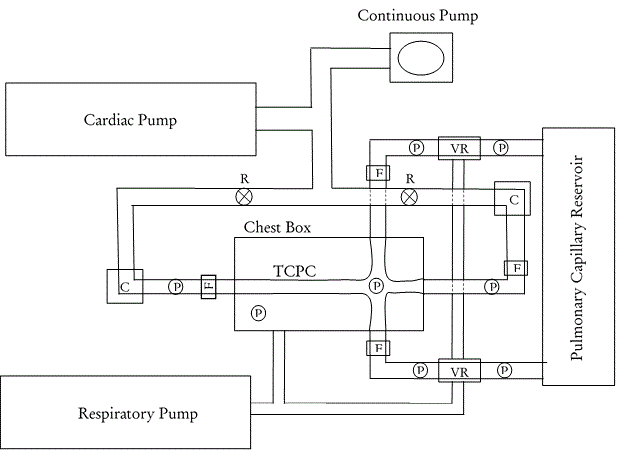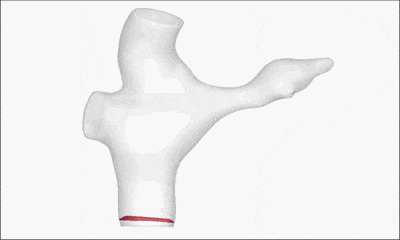Our focus on the Fontan procedure aims to improve understanding surrounding the effects of congenital heart disease surgical treatments on the circulatory system. The Fontan surgery is necessary to allow for a single ventricle heart to support life, but long-term complications still exist. Our lab uses both computational and experimental fluid models to study, and hopefully eliminate, these complications. Experimental fluid models allow us to create physiological situations and collect invasive data that are not possible in patient data sets. The experimental models are based on a physical lumped parameter concept that uses electrical circuit analogs to create fluid pressures and flows. Figure 1 shows a schematic of the Fontan loop experimental circulation.

We also use computational models to study hemodynamics, fluid dynamics of blood, and its tie to these long-term Fontan complications. Computational studies are based on the Navier-Stokes equations, a set of fluid mechanics equations describing the momentum and mass conservation of a fluid. These computations allow for a more detailed understanding of the fluid dynamics than experimental models or patient data. However, the results of solving these equations must also be validated against experimental and patient results. This movie highlights flow from the inferior vena cava as it flows through the Fontan connection. The uneven distribution to the left and right pulmonary arteries is a key indicator that this patient will develop pulmonary arteriovenous malformations, a debilitating Fontan complication.
